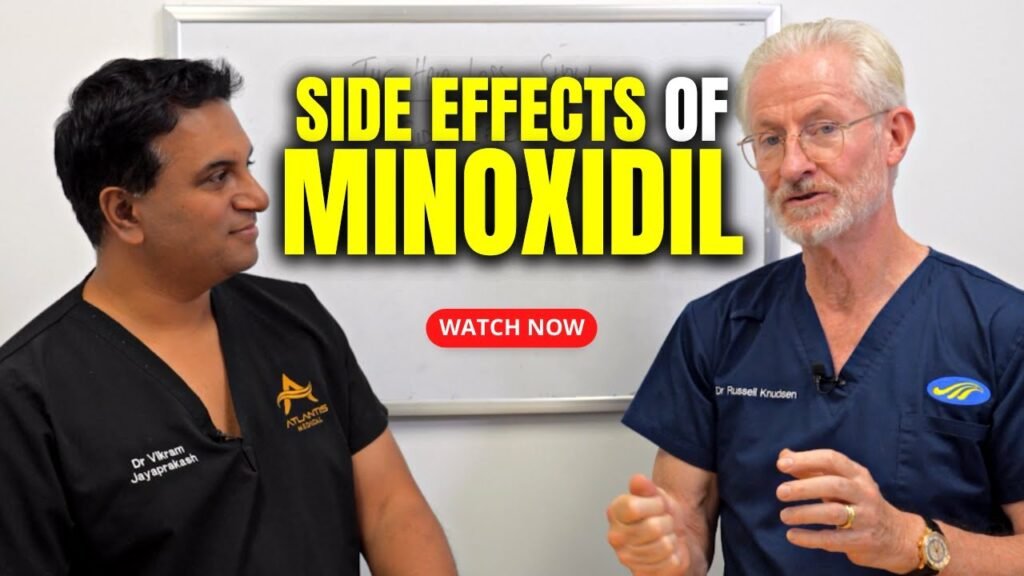Understanding Minoxidil and Its Common Side Effects
Minoxidil is a popular over-the-counter medication commonly used to treat hair loss. Originally developed as an oral medication for high blood pressure, it was discovered that one of the side effects was hair growth, leading to its topical application for treating conditions like androgenetic alopecia. Minoxidil works by stimulating hair follicles and increasing blood flow to the scalp, which can promote hair regrowth and slow down hair loss. Available in various forms such as foam and liquid, minoxidil is a go-to solution for many individuals seeking to combat hair thinning and baldness.
Despite its effectiveness, minoxidil is not without its side effects. Common side effects include scalp irritation, dryness, and itching. These symptoms are generally mild and can often be managed by adjusting the frequency of application or using a moisturizer to alleviate dryness. Some users may experience an initial increase in hair shedding when they first start using minoxidil, which can be alarming. However, this is usually a temporary phase as the product begins to work, replacing weaker hairs with stronger ones.
In addition to these localized effects, there are potential systemic side effects, although they are less common. Some individuals may experience dizziness, rapid heartbeat, or swelling in the hands and feet. If any of these symptoms occur, it is crucial to consult a healthcare provider immediately. Its important to note that while minoxidil is generally safe for most users, it should be used with caution and according to the instructions provided, especially for those with underlying health conditions or those taking other medications.
Can You Reduce Minoxidil Side Effects? Effective Strategies to Consider
Minoxidil is a popular treatment for hair loss, but like any medication, it can have side effects. If youre experiencing unwanted reactions, there are several strategies you can employ to mitigate these effects. One of the most common side effects is scalp irritation. To reduce this, consider using a lower concentration of minoxidil. Many users find that switching from a 5% solution to a 2% solution significantly lessens irritation while still promoting hair growth. Additionally, applying the product to dry hair and ensuring your scalp is free from other products can help minimize discomfort.
Another effective strategy to consider is adjusting the application frequency. Some individuals find that using minoxidil once a day instead of twice can still yield positive results with fewer side effects. Its important to monitor your scalps reaction and consult with a healthcare provider before making any changes to your routine. They can provide personalized advice based on your specific situation and ensure that your approach is both safe and effective.
Hydration and Moisturization: Keeping your scalp hydrated can also play a significant role in reducing side effects. Incorporating a gentle, hydrating shampoo and conditioner into your hair care routine can help maintain scalp health. Look for products that are free from sulfates and other harsh chemicals, as these can exacerbate dryness and irritation. Additionally, using a moisturizer specifically designed for the scalp can help alleviate dryness and flakiness, making your minoxidil experience more comfortable.
Natural Alternatives to Minoxidil: Are They Safer?
For those seeking to address hair loss without the use of synthetic treatments like Minoxidil, several natural alternatives have emerged as potential solutions. These options are often touted for their ability to promote hair growth while minimizing the risk of side effects associated with chemical treatments. One popular choice is saw palmetto, a plant extract that has been shown to inhibit the production of dihydrotestosterone (DHT), a hormone linked to hair loss. By reducing DHT levels, saw palmetto may help slow down hair thinning and support healthier hair growth.
Another natural remedy gaining attention is rosemary oil, which is believed to improve circulation to the scalp and stimulate hair follicles. Some studies suggest that rosemary oil can be as effective as Minoxidil in promoting hair growth, with the added benefit of fewer side effects. Additionally, peppermint oil is praised for its invigorating properties that may enhance blood flow and support follicle health, potentially leading to thicker, fuller hair.
Incorporating these natural alternatives into a hair care routine can be a safer option for individuals sensitive to the ingredients in Minoxidil. However, its essential to note that while natural treatments are generally considered safe, they may not be suitable for everyone. Allergic reactions or sensitivities to plant-based products can occur, so its advisable to conduct a patch test before full application. Moreover, consulting with a healthcare professional or dermatologist can provide personalized guidance on the most appropriate and effective hair loss treatments for individual needs.
Expert Tips on Minimizing Minoxidil Side Effects
Minoxidil is a popular treatment for hair loss, but some users experience side effects that can range from mild to bothersome. Fortunately, there are several expert-recommended strategies to help mitigate these unwanted effects. One key tip is to start with a lower concentration of minoxidil. Many products are available in 2% and 5% formulations, and beginning with a lower concentration can allow your body to adjust gradually. This approach can reduce the risk of irritation and other side effects like itching or dryness.
Another crucial recommendation is to apply minoxidil correctly and consistently. Experts suggest using the product only on a clean, dry scalp and avoiding excessive application. Applying more than the recommended amount does not enhance effectiveness and may increase the likelihood of side effects. Additionally, washing your hands thoroughly after application prevents accidental transfer to other areas, which could lead to unwanted hair growth.
Stay Hydrated and Moisturize: Keeping your scalp well-hydrated can also help minimize side effects. Experts advise using a gentle, hydrating shampoo and conditioner to combat dryness and flakiness. For those experiencing significant scalp irritation, incorporating a moisturizer or a soothing scalp serum may provide relief. It’s important to choose products free from harsh chemicals that could exacerbate irritation.
Frequently Asked Questions About Minoxidil Side Effects
Minoxidil, a popular treatment for hair loss, is known for its effectiveness but also comes with potential side effects. Understanding these side effects is crucial for anyone considering or currently using this medication. Here are some frequently asked questions that address common concerns about minoxidil side effects.
What are the most common side effects of minoxidil?
The most frequently reported side effects of minoxidil include scalp irritation, dryness, and itching. These symptoms occur because minoxidil is a topical solution applied directly to the scalp, which can sometimes lead to sensitivity. Some users also experience unwanted facial hair growth due to the medications ability to stimulate hair follicles.
Can minoxidil cause serious side effects?
While serious side effects are rare, they can occur. These may include dizziness, rapid heartbeat, and swelling of the hands or feet. If you experience any of these symptoms, its important to seek medical attention immediately. Additionally, some individuals may develop an allergic reaction to minoxidil, characterized by a rash, hives, or difficulty breathing. In such cases, discontinuing use and consulting a healthcare provider is essential.
How can I minimize the side effects of minoxidil?
To reduce the likelihood of side effects, follow the recommended dosage and application instructions carefully. Applying more than the advised amount will not increase effectiveness and may increase the risk of side effects. Its also helpful to conduct a patch test before starting regular use to check for any allergic reactions. Maintaining a clean scalp and using a gentle shampoo can also help mitigate irritation.


